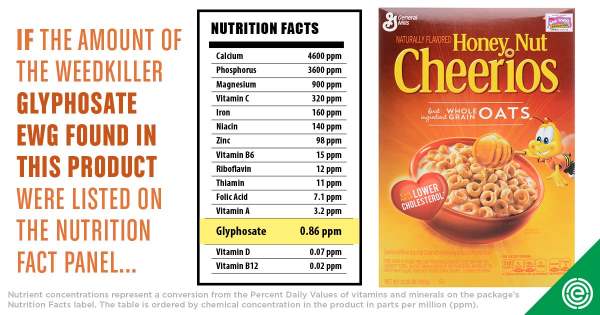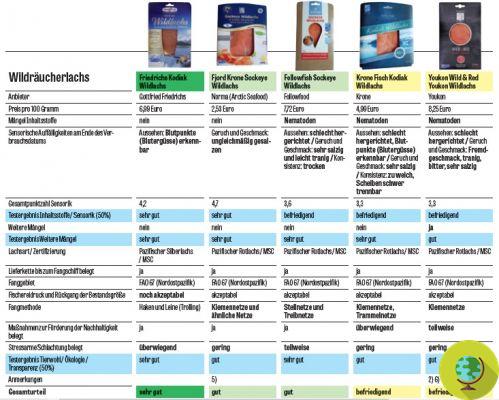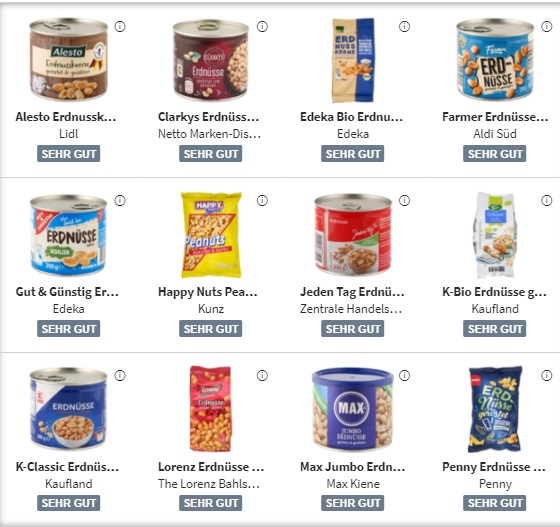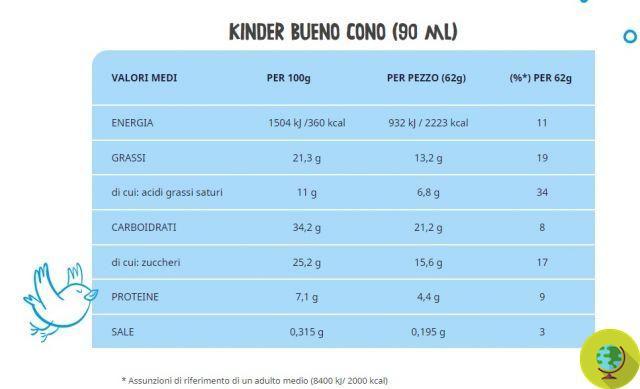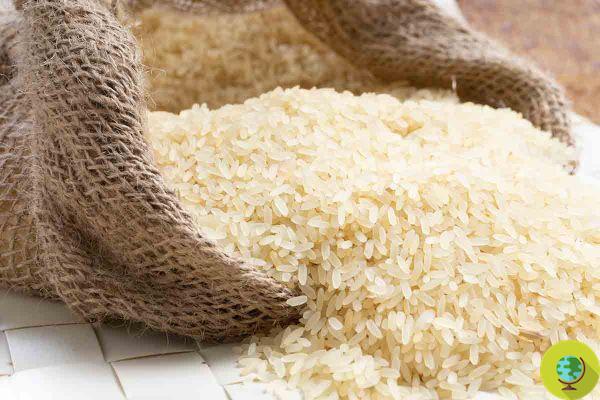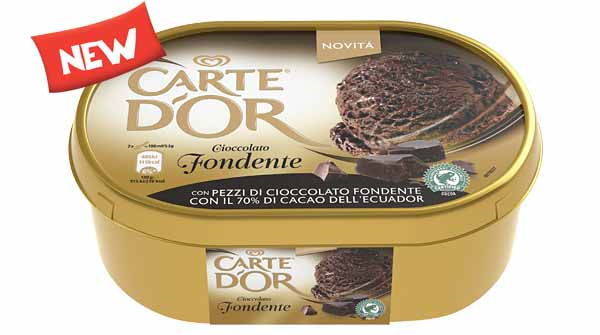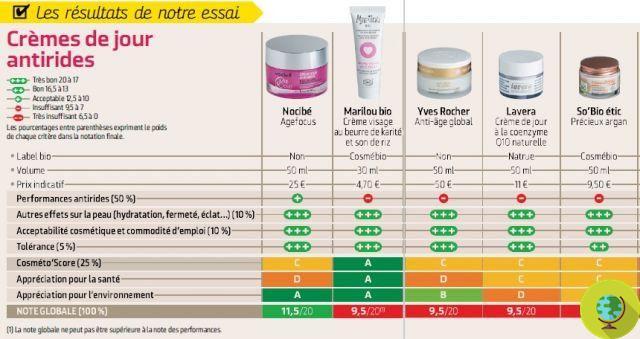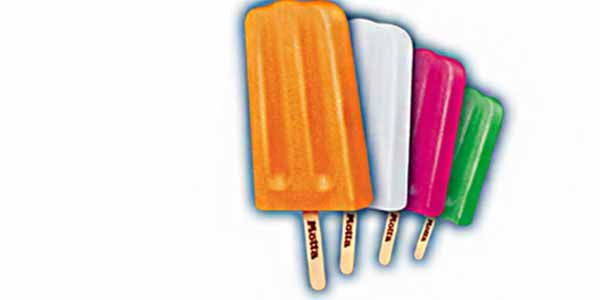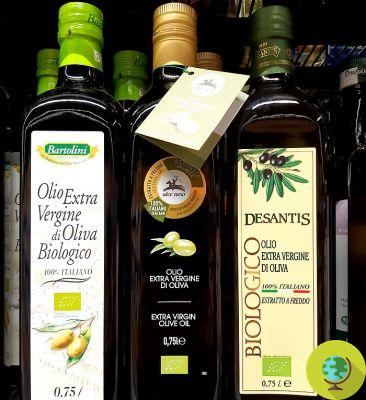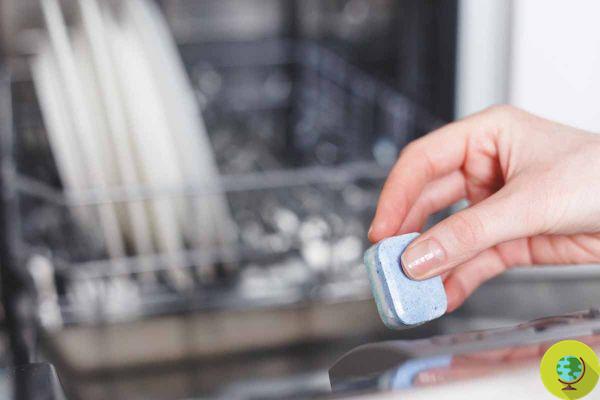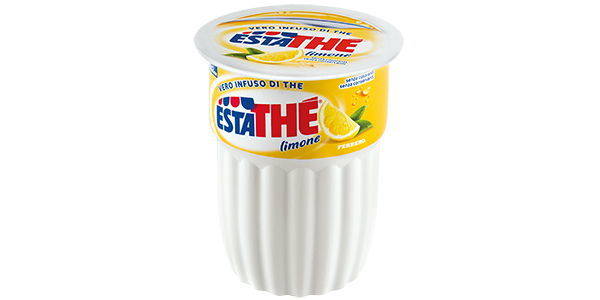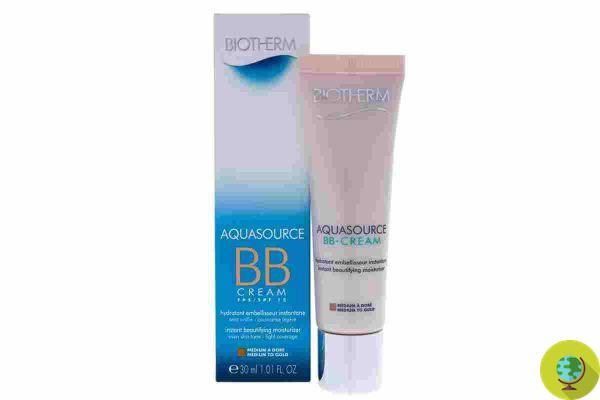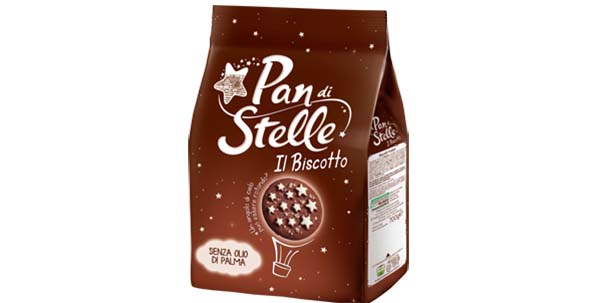Crackers are convenient products that you can carry in your bag and consume at any time as a snack to break hunger. But how to orient yourself in the choice? Are there better products than others and what to watch out for on the label?
Don't store avocado like this: it's dangerousCrackers are convenient and practical products that you can carry in your bag and consume at any time as a snack to break hunger. Crunchy, tasty and long-lasting are often present in our pantries, it is no coincidence that when we enter any supermarket we are faced with a wide range of crackers of all kinds, sizes and flavors. But how to orient yourself in the choice? There are better products than others and what to watch out for on the label?
When it comes to crackers, you need to focus on amount of salt present, which in some cases is really a lot, on the kind of fat used (for example, there may be palm oil), on the total saturated fat present but also on the type of flour with which they are made and the presence of chemical raising agents or other ingredients.
Then there are the so-called unsalted crackers which are actually salty and how. A few years ago several companies had to change the misleading words "without salt" printed in plain sight on the packages, putting the more correct "unsalted crackers on the surface" or "with reduced salt content".
Read also: UNSALED CRACKERS: 13 COMPANIES FORCED TO CHANGE THE WORDING ON THE LABEL
Reading the labels is more essential than ever: looking carefully you can discover, for example, that a product defined as "spelled and buckwheat" actually contains only 8% of these flours and 85% of wheat flour (this is only one of many surprises and may reserve the reading of food labels!). It is therefore evident how important it is do not be captivated by attractive packaging and slogans and when on the contrary it is necessary to always go to the bottom by reading the list of ingredients and the nutritional table.
The alternative to packaged products is that of making crackers at home. Water, extra virgin olive oil, flour, herbs and spices are enough to flavor them.
Let's put it now in comparison the best known and most used crackers, the ones that you probably also have at home or have ever bought.
Index
COMPARING LABELS
SALTED WHEAT PASTRY - WHITE MILL
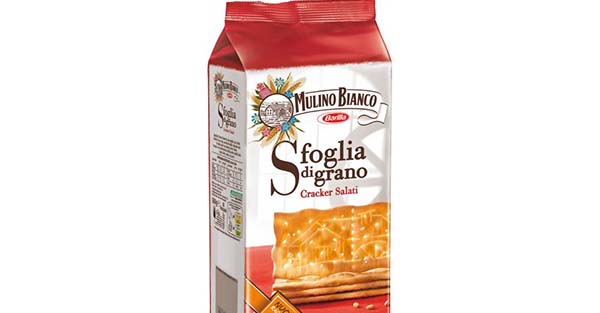
ingredients: Wheat flour, sunflower oil, salt, barley and corn malt extract, acidity regulator: sodium hydrogen carbonate, malted barley flour, mother yeast 0,5% (wheat flour, water, malted barley, yeast), yeast.
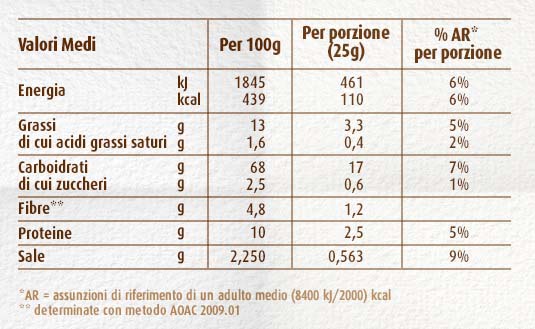
CRACKERS SALATI PREMIUM - SAIWA
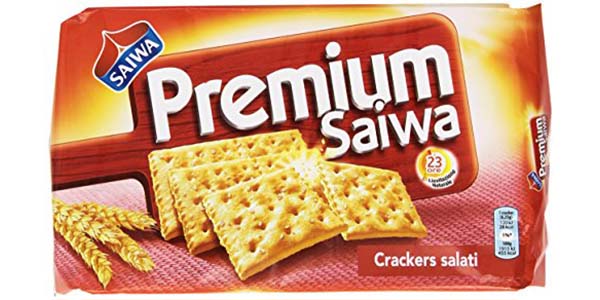
ingredients: WHEAT flour, palm vegetable oil, acidity regulator (sodium carbonates), salt 2,3%, BARLEY malt flour, brewer's yeast, natural mother yeast.
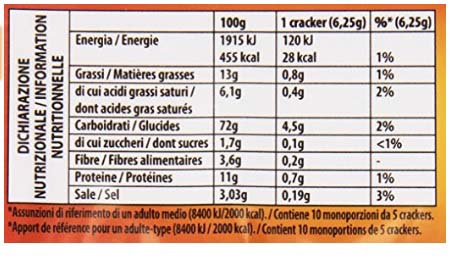
CRACKERS WITH REDUCED SALT CONTENT - PAVESI
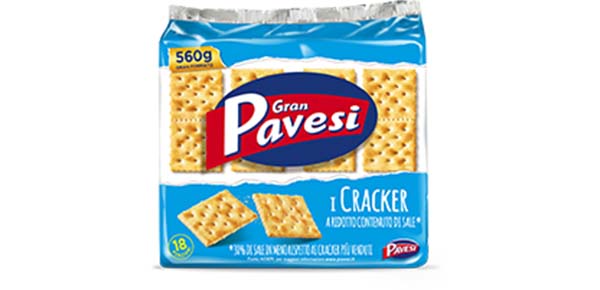
ingredients: Wheat flour, soybean oil, barley and corn malt extract, salt, acidity regulator: sodium hydrogen carbonate, malted barley flour, yeast.
It may contain traces of: peanuts, nuts, milk, sesame, soy and eggs.
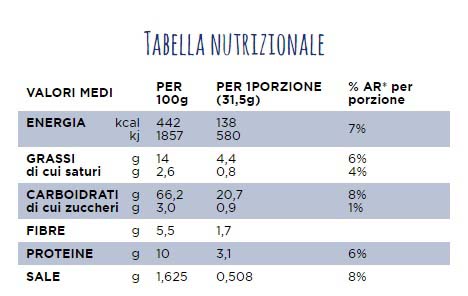
CORN CRACKERS - GALBUSERA
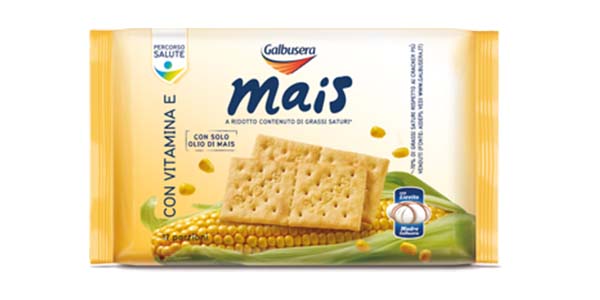
ingredients: Wheat flour, 11% corn oil, 10% corn flour, barley malt extract, 1% natural mother yeast (wheat), whole sea salt, acidity regulator (from leavening) sodium hydrogen carbonate, barley malt, baker's yeast (brewer's yeast), natural flavors, vitamin E.
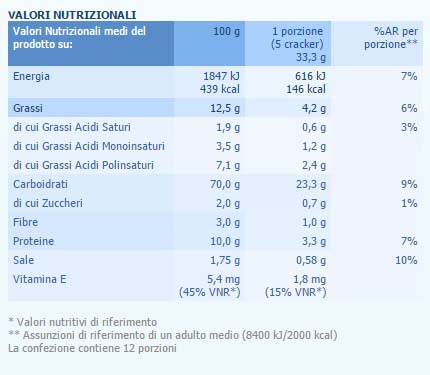
RICE ON RICE - GALBUSERA
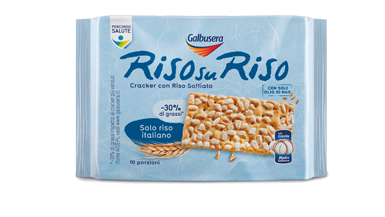
ingredients: Wheat flour, 12% puffed rice, 9% rice flour, 8% corn oil, barley malt extract, 1% natural mother yeast (wheat), 1% whole sea salt, acidity regulator (from leavening) sodium hydrogen carbonate, barley malt flour, baking yeast (brewer's yeast).
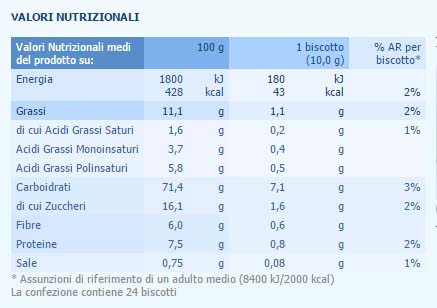
RICE CRACKERS - SCOTTI
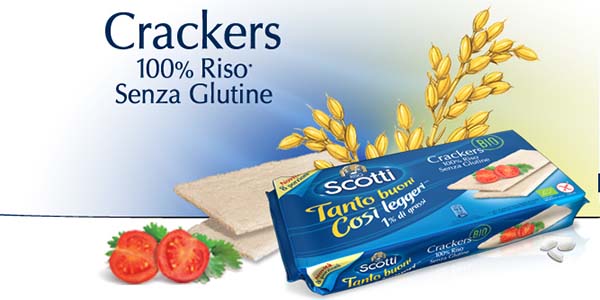
ingredients: Rice flour *, sea salt. * = From organic farming.
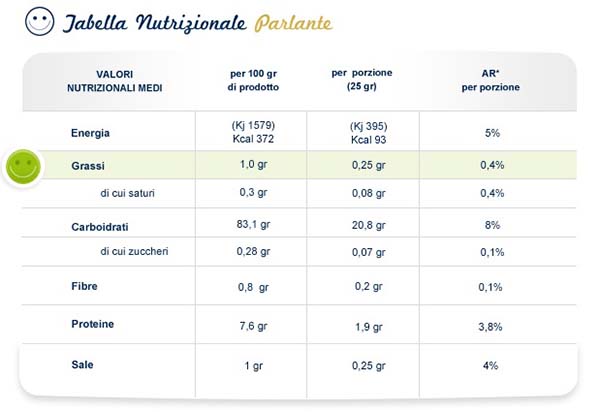
SPELLED AND BUCKWHEAT CRACKERS - VITASNELLA
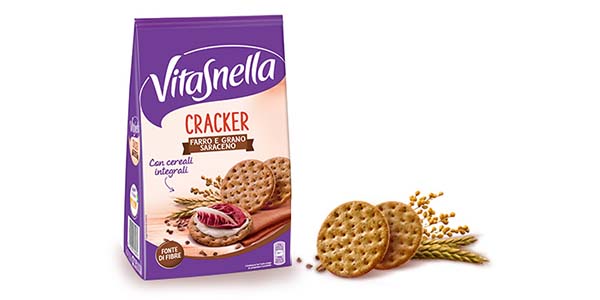
ingredients: wheat flour 85,7%, palm oil, wholemeal spelled flour 4%, wholemeal buckwheat flour 4%, cooked lentil flour, brewer's yeast, wheat bran, salt, pea vegetable fiber 1,8% , whole milk powder, wheat gluten, emulsifier (E481), barley malt extract, barley malt flour, acidity regulator (sodium carbonates), malted wheat flour, antioxidants (rosemary extracts).
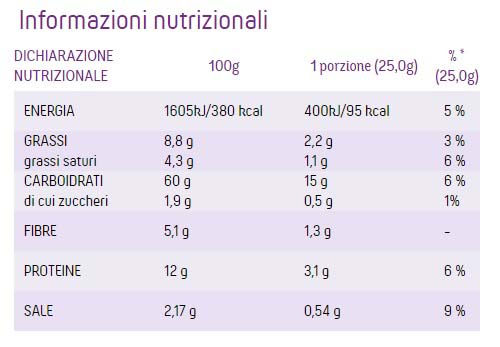
WHOLEMEAL CRACKERS - COLUSSI
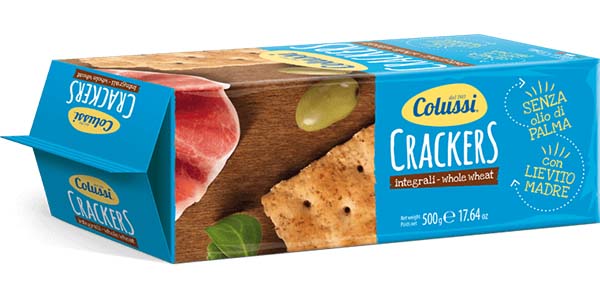
ingredients: Wheat flour - whole wheat flour (37%) - sunflower oil (9%) - yeast - salt - barley and wheat malt extract.
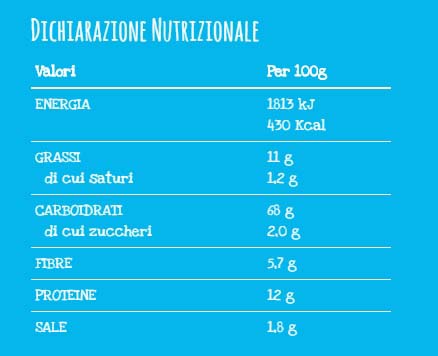
FULL FIBER CRACKERS EXTRA - SIZE
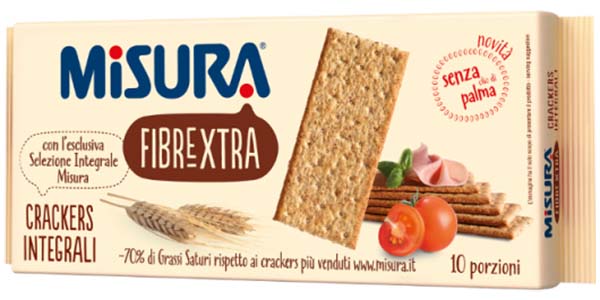
ingredients: Whole Wheat Measure Selection Fibrextra 92% (whole wheat flour 98,7% *, soluble fiber from wheat starch 1,3%) - Sunflower oil (9%) - Skimmed milk powder - Raising agents: ammonium acid carbonate, sodium hydrogen carbonate, disodium diphosphate - Barley and corn malt extract - Salt - Brewer's yeast - Flour treatment agent: L-ascorbic acid. (*) Equal to 91% of the total recipe. Contains gluten and milk. May contain soy, sesame.
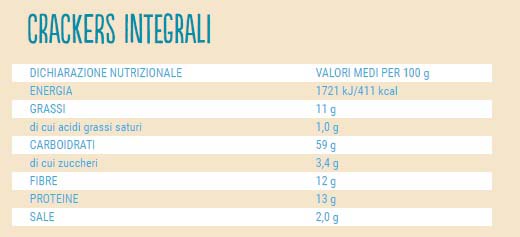
MINI SPELLED CRACKERS - SARCHIO
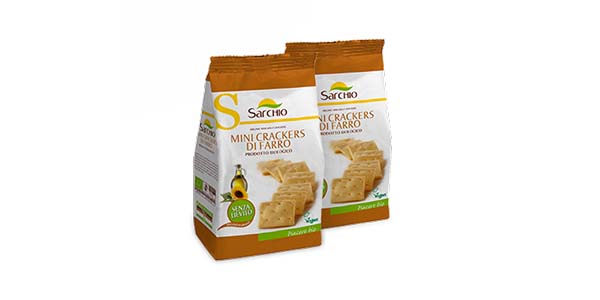
ingredients: * spelled flour (89%), * sunflower oil (7%), * barley malt, salt, water. * Organic product.
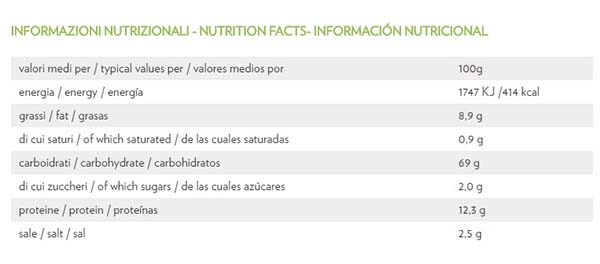
COMPARATIVE TABLE
Now let's compare specifically in the different crackers: the quantity of salt, the type of flour used, the fats present and the raising agents used and the fibers. This comparison table will make it easier for you.
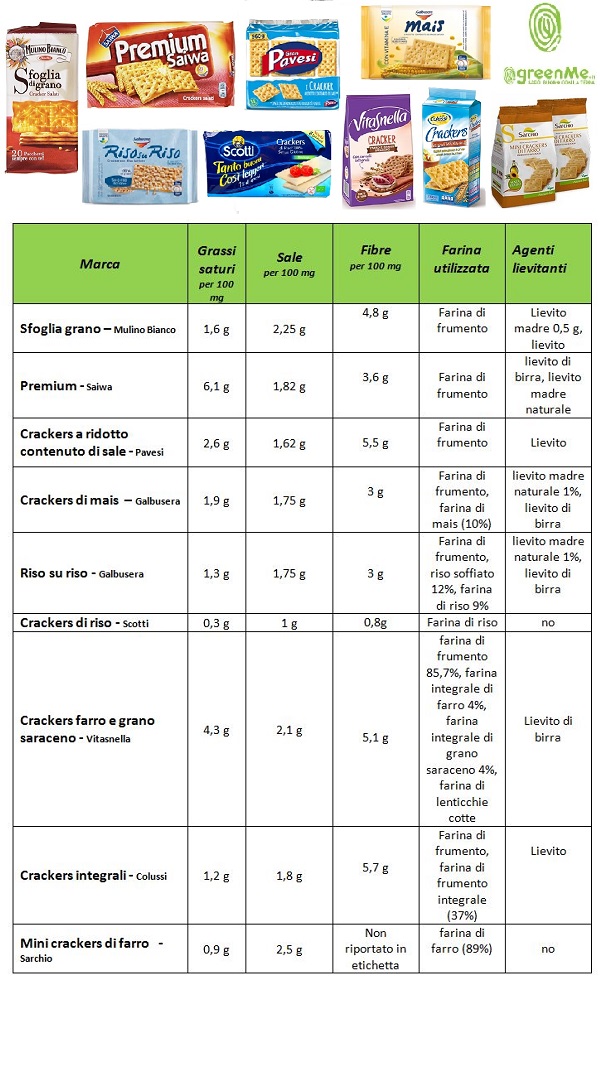
THE OPINION OF THE NUTRITIONIST
We asked Roberta Martinoli, doctor and nutritionist, to give us some useful information to be able to choose, among the many types on the market, the highest quality crackers. Here's what he told us:
“The food industry offers us an extreme variability of crackers. The consumer perceives them, not always rightly, as lighter and more practical products than bread and this is because a packet of crackers already defines the dose we must consume. There is no need to shop every day as it happens when we choose to eat bread. But not all crackers are created equal. There are those that contain grassi of vegetable origin and those that are completely fat-free. There are the integral ones and those that undeservedly boast of this term. Often, in fact, the material they are made of is refined soft wheat flour (type 0) with the addition of bran. In other cases, wholemeal flour represents just half of the dough.
Then there are the cheese-flavored crackers. Often it is a cheese made from powdered milk and therefore of poor quality. Each time the list of ingredients becomes more complicated, sugars also appear alongside the salt and often in the most processed crackers we find the ubiquitous glucose-fructose syrup ".
How should we Than we orient us in the choice?
“It is precisely the list of ingredients that represents our main criterion of choice. We'd love to find a cracker that contains real whole wheat flour and not type 0 soft wheat flour, that does not contain fats and that in case it does does not include palm oil in its formula, be it leavened using a natural yeast, that does not contain glucose-fructose syrup or malted flours. In fact, we often see barley malt extract or malted flours among the ingredients. What is it about? The grains of the cereal are macerated in contact with water, then placed in special germination chambers and finally dried. During germination, starch is converted into simpler molecules (maltose and dextrose) by two enzymes, beta and alpha-amylase. Yeasts grow using these sugars as a nutrient substrate. Therefore the malted flours are foreseen in the dough for a need of the food industry. In this way it will be possible to obtain a more crumbly product because it is better leavened. The sugars that remain in the dough because they have not been consumed by the yeasts caramelize during cooking, making it possible to obtain a more colorful and tasty product. But as a result of the same caramelization process, we will also find acrylamide, a potentially carcinogenic substance, among the undeclared ingredients. Furthermore, part of the sugars remain in the finished product, thus raising the glycemic index ".
Read also: 10 alternative flours to 00 flour
HOME MADE CRACKERS
Even with regard to crackers, we recommend self-production whenever possible. Making tasty and healthy crackers at home is quick and easy, with or without sourdough. The advantages are undoubtedly many: having a fresh product made with better quality ingredients, starting from flour, and the possibility of limiting the quantity of salts and fats. Here are some recipes you can experiment with:
Homemade crackers: 10 homemade recipes
Snack vegan: cracker alla curcuma





